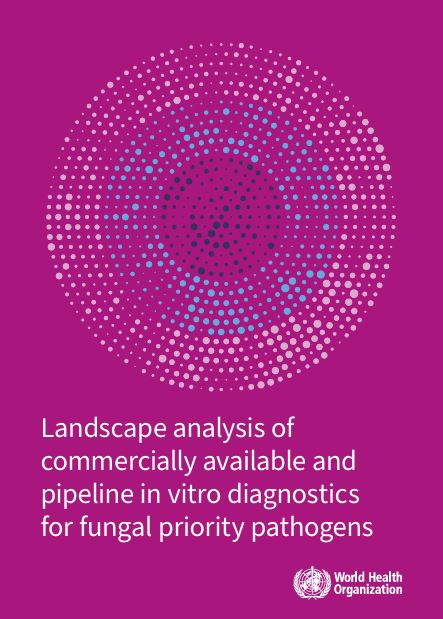The World Health Organization (WHO) today published its first-ever reports addressing the critical lack of medicines and diagnostic tools for invasive fungal diseases, showing the urgent need for innovative research and development (R&D) to close these gaps.
Fungal diseases are an increasing public health concern, with common infections – such as Candida, which causes oral and vaginal thrush – growing increasingly resistant to treatment. These infections disproportionately impact severely ill patients and those with weakened immune systems, including individuals undergoing cancer chemotherapy, premature babies, living with HIV, and who have had organ transplants.
“Invasive fungal infections threaten the lives of the most vulnerable but countries lack the treatments needed to save lives,” said Dr Yukiko Nakatani, WHO Assistant Director-General for Antimicrobial Resistance ad interim. “Not only is the pipeline of new antifungal drugs and diagnostics insufficient, there is a void in fungal testing in low- and middle-income countries, even in district hospitals. This diagnostic gap means the cause of people’s suffering remains unknown, making it difficult to get them the right treatments.”
The fungi in the top ‘critical priority’ category of the WHO’s fungal priority pathogens list (FPPL) are deadly, with mortality rates reaching as high as 88%. Advancements in treatments mean that more people are likely to be living with immunocompromised conditions, which also could mean increases in cases of invasive fungal diseases. This is a complex challenge to manage due to inaccessibility of diagnostic tools, limited availability of antifungal medicines, and a slow and complex R&D process for new treatments.
Landscape report of diagnostics for fungal priority pathogens
The new diagnostics report is the most comprehensive review ever undertaken on the diagnostic barriers within IFD.

The report shows that while commercially available tests exist for fungal priority pathogens, these rely on well-equipped laboratories and trained staff, which means that most people in in low- and middle-income countries (LMICs) do not benefit from them. All countries, but particularly LMICs, need faster, more accurate, cheaper and easier testing for a broad range of fungal priority pathogens, including diagnostic tools that can be used at or near point-of-care.
There are many challenges with existing antifungal diagnostics; they work only for a limited range of fungi, are insufficiently accurate and take a long time to obtain results. Most of the tests are not well suited to primary and secondary health facilities as certain diagnostics require stable electricity supplies in suitably equipped laboratories.
Health workers often have insufficient knowledge about fungal infections as well as the impact of fungi growing more resistant to treatments, resulting in limited ability to identify fungi and perform susceptibility testing needed to determine the appropriate treatment. WHO calls for strengthening the global response against invasive fungal diseases and antifungal resistance, and is also developing an implementation blueprint for the FPPL.
Priorities
The report highlights the barriers in diagnosing IFDs and these form the basis of the future WHO recommendations for IFD research:
- Fungal diagnostics in low- and middle-income countries (LMICs) face major challenges. Level II facilities often lack the trained personnel needed for microscopy and histopathology, while fungal culture and antifungal susceptibility testing (AFST) are largely unavailable below level III.
- Commercial biochemical tests for yeast identification are limited, and current systems lack regulatory approval for filamentous fungi, often showing poor sensitivity and specificity.
- Non-culture diagnostic methods are mostly restricted to a few WHO-prioritized pathogens like Candida spp., Aspergillus fumigatus, Cryptococcus neoformans, and Pneumocystis jirovecii.
- Multiplex platforms that can detect fungi directly from clinical samples and include AFST are lacking at level II. Additionally, lateral flow immunoassays (LFIAs) that can detect a broad range of fungal pathogens are few, with no multiplex LFIAs suitable for use at any healthcare level. While Cryptococcus LFIAs are available, their performance is variable, highlighting the urgent need for improved, pathogen-inclusive, and easy-to-use diagnostic tools.
- Blood culture remains the standard way of testing for IFDs, but in LMICs, blood culture and AFST are generally only performed at level III and level IV laboratory facilities. To expand blood culture usage to level II laboratories, a simpler blood culture system is required.
This report sets out the agenda for future IFD diagnostics research and funding priorities and calls for strengthening the global response against invasive fungal diseases and antifungal resistance.
